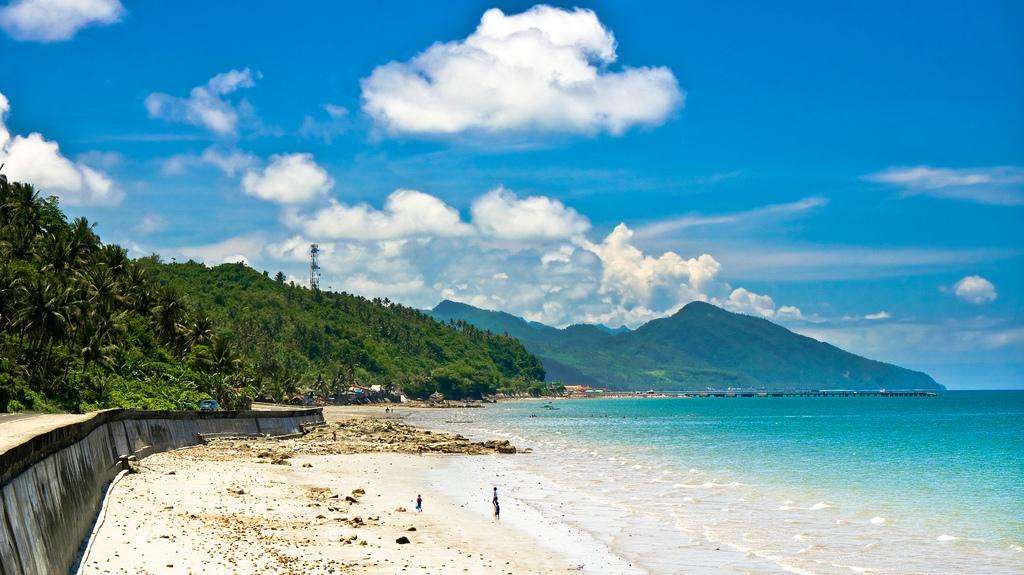

Quezon, officially the Province of Quezon, is a province in the Philippines located in the Calabarzon region on Luzon. Kaliraya/Kalilayan was the first known name of the province upon its creation in 1591. Around the middle of the 18th century, it was changed to Tayabas. In recognition of the second president of the Philippines, Manuel L. Quezon, the name of Tayabas Province is changed to Quezon. Lucena, the provincial capital, the seat of the provincial government, and the most populous city of the province, is governed independently from the province as a highly urbanized city. To distinguish the province from Quezon City, it is sometimes called Quezon Province.
Quezon is southeast of Metro Manila and is bordered by the provinces of Aurora to the north, Bulacan, Rizal, Laguna and Batangas to the west and the provinces of Camarines Norte and Camarines Sur to the east. Part of Quezon lies on an isthmus connecting the Bicol Peninsula to the main part of Luzon. The province also includes the Polillo Islands in the Philippine Sea. Some marine parts of the Verde Island Passage, the center of the center of world's marine biodiversity, are also in the province.
A major tourism draw to the province is Mount Banahaw. The mountain is surrounded by spiritual mysticism with many Anitist adherents, Christian cults, and Christian organizations staying on the mountain. The mountain was also one of the most sacred sites for pre-colonial Tagalog people before the arrival of the Spanish. Numerous pilgrims visit the mountain especially during Holy Week.
Archaeological excavations in the province attest to its rich precolonial past. Archaeological materials including burial jars, human bones, shell midden and pot shreds have been discovered at different sites in Bondoc Peninsula including the towns of San Narciso, San Andres, Mulanay and Catanauan. The most recent excavations were conducted in Catanauan by the Catanauan Archeological and Heritage Project.
According to the preliminary report released by the Catanauan Archaeological and Heritage Project, several excavations were conducted in the 1930s. One of the excavations was conducted in San Narciso where archaeologists found burial jars. The site, inspected by Ricardo Galang, resulted in the discovery of burial jars near the coast. Galang also went to San Andres where excavations yielded 14th and 15th century ceramics as well as shell bracelets and beads. According to the journal as well, at a site named Tala, archaeologists discovered a glazed Chinese jar containing bone fragments from the early Ming dynasty. Looking at other archaeological sites located in adjacent areas like Marinduque and Masbate, it can be inferred that these excavations date back to the metal period of the archipelago.
In 2012, at Mt. Kamhantik in the town of Mulanay, 15 limestone coffins were discovered. Carbon dating on a human tooth found it to be at least 1,000 years old. According to the archaeologists, the village is proof that the ancient inhabitants of the area practiced a more sophisticated way of life. Metal tools are believed to have been used to carve the coffins, and this is the first of its kind discovered in the archipelago. The remains are said to date back to the 10th to 14th century.
Originally, what now forms Quezon was divided among the provinces of Batangas, Laguna, and Nueva Ecija. However, at different points in time, the boundaries of Quezon changed and included parts of Aurora, Marinduque, and Camarines Norte. At the early period of Spanish colonization, the province of Aurora was called El Principe, Infanta was called Binangonan de Lampon, and southern Quezon was called Kalilayan. The first European to explore the area was Juan de Salcedo in 1571–1572, during his expedition from Laguna to Camarines provinces.
In 1574, Father Diego de Oropesa founded the town of Bumaka, now known as the municipality of Gumaca.
In 1591, the province was created and was called Kaliraya or Kalilayan, after the capital town which later became Unisan.
In 1595, the Diocese of Cáceres was established by Pope Clement VIII as a suffragan of Manila. The diocese covered the entire Bicolandia region plus the towns in Kalilayan, and the Contracosta towns. At that time, the towns on the eastern seaboard were pertained to as the Contracosta and included towns from Mauban, Binangonan de Lampon, to El Principe.
The destruction of Kalilayan in 1604 by a big fleet of Moro pirates caused the inhabitants to transfer to Palsabangon (Pagbilao). Depredation and plunder by the Moros from Jolo and Brunei were rampant during the 1600s. Slavery is one reason for the proliferation of these raids. A padron for Calilaya was ordered after Tayabas suffered severely from Moro raids. It is said that 187 people were either captured or killed while 400 people fled. Fear from these raids are the primary reason as to the permanent movement of settlements along the coast further inland as well as a general decline in population. Frequent invasions by the moros disrupted the food production in the province, affecting the nutrition of its inhabitants. Maternal malnutrition was even cited as one of the primary causes of infant mortality at that time. By 1701, the previously densely settled coastal areas of the province, was described as consisting of rancherias whose inhabitants depended on wild products.
In 1705, the Military Comandancia of Nueva Ecija was created and was governed by Governor General Fausto Cruzat y Góngora. It included huge swathes of Central Luzon, the Contracosta towns as well as the Kalilayan area.
In 1749, the capital was transferred to the town of Tayabas, from which the province got its new name.
In a report by a Spanish priest named Fr. Bartolome Galan in 1823, he describes the economy of the province. According to his report, Tayabas had poor soil and the terrain is hilly which meant that conditions were not that suitable for agriculture compared to other places. The people grew upland rice, wheat, beans and vegetables. Surplus rice was sold in San Pablo and Majayjay on Mondays, the market day of those towns. Cattle breeding was rampant in towns like Tayabas, Pagbilao, Tiaong, and Sariaya. Also, unlike other provinces, haciendas were not so many in Tayabas. Instead, residents owned most of their own land.
The people of Tayabas, as in other areas, are actively trading with Manila. Santa Cruz, Laguna, was the entrepot for all goods going to the capital. The people from Lucban made products of buri and pandan leaves like hats, sleeping mata and the like which they traded. They, along with the people of Mauban also went to Polillo, at that time part of Nueva Ecija, to buy sea slugs, shells and beeswax. Being a rich agricultural area, the town of Tayabas traded rice, coconuts, and panocha with nearby towns of Majayjay, Lucban, Sariaya, Pagbilao, Mauban, Gumaca, and Atimonan. In turn, they traded fish from Pagbilao, rice from Sariaya, and high quality abaca products from Mauban and Atimonan. Lucban, as well as Tayabas, benefitted greatly from the high commercial activity of Chinese and Chinese mestizos in the pueblos.
Gumaca, being a town with little arable land depended heavily on the sea. They collected sea slugs, and tortoise shell from Alabat and traded with the mountain people there for beeswax in exchange for clothing. They even sometimes ventured to Burias Island in Ragay Gulf in search for these goods. These products were then sent to Tayabas for shipment to Manila. Gumaca also traded items from nearby pueblos like vinegar and clothing for gold and abaca from Naga in the Bicol region.
In 1853, the new military district of Tayabas was carved from Nueva Ecija and included present-day Southern Quezon as well as present-day Aurora. In 1858, Binangonan de Lampon and the Polillo Islands were separated from Nueva Ecija to form part of Infanta. According to the Catholic Bishops' Conference of the Philippines, the two Franciscan friars named Fray Juan de Plasencia and Fray Diego de Oropesa were the ones responsible for bringing Christianity to the area. The Franciscans are also credited for spreading Christianity to towns and parishes across the province including Mauban, Sariaya and Gumaca.
Between 1855 and 1885, El Principe was established as its own Military Comandancia with its capital in Baler.
It was also around this time that the Confradia de San Jose was active in the province, caused by the growing inequality between the poor and the upper classes. This organization was directed mostly on the poor and neither admitted Spaniards nor mestizos.
After years under the Spanish regime, the colonized people grew discontented with the Spaniards over the centuries. The most important event in the history of the province was the Confradia Revolt in 1841, which was led by the famous Lucbanin, Apolinario de la Cruz, popularly known as Hermano Pule.
Years after the Cofradia Revolt, on January 20, 1843, the Tayabas Regiment, led by Sergeant Irineo Samaniego, rose in revolt against Spain, conquering Fort Santiago and other areas of Intramuros. This is the only native force in Philippine history to successfully capture Fort Santiago and Manila. For the first time, the word "Independence" was shouted by the Tayabas Regiment, encouraging their countrymen to revolt against Spain. The next day, however, the gates of Fort Santiago were opened by loyalist soldiers. After a bloody battle, the mutineers were defeated by loyalist troops, resulting in the execution of Samaniego and 81 of his followers the same day.
The province, under General Miguel Malvar, was also among the earliest to join the Philippine Revolution. The Revolutionary Government took control over the province on August 15, 1898.
The Americans then came and annexed the Philippines. A civil government was established in the province on March 12, 1901, and Lucena was made the provincial capital.
During the pacification of the archipelago by the Americans, insurrections were a commonplace in what was then Tayabas. Insurgents from neighboring provinces of Laguna and Batangas often use Tayabas as their base of operations as well as their source of supplies. An insurgent government, with connections to Gen. Malvar and Pedro Caballes was even said to be based in Infanta. This has led the American in charge, Brigadier-General J.F. Bell to decide to return to Tayabas with a larger contingent. Bell acknowledged the importance of the ports of Tayabas as sources of supplies to the insurrection such that he believed that closing all the ports in the province might convince the leaders of the resistance to surrender.
In 1902, the district of El Principe was transferred from the jurisdiction of Nueva Ecija to Tayabas. In the same year, Marinduque became part of Tayabas province by virtue of Act 499 enacted by the Philippine Commission. However, by 1920, Act 2280 was passed by the Philippine Congress, reestablishing Marinduque as a separate province. The present areas of north Aurora were transferred from the authority of Nueva Vizcaya to Tayabas in 1905.
Because of the distance between Tayabas and Bicol and the growing population, Tayabas came under the jurisdiction of the Diocese of Lipa in 1910.
Japanese occupation of the province during World War II began on December 23, 1941, when the Japanese Imperial Army landed in Atimonan. The General Headquarters of the Philippine Commonwealth Army and Philippine Constabulary was stationed in Tayabas from January 3, 1942, to June 30, 1946, are military operates against the Japanese Occupation. The occupation witnessed the brutal murders of prominent sons of Tayabas. April 4, 1945 was the day the province was liberated as the combined Filipino and American army forces reached Lucena.
After the war, on September 7, 1946, Republic Act No. 14 changed the name Tayabas to Quezon, in honor of Manuel L. Quezon, the Commonwealth president who hailed from Baler, which was one of the province's towns.
Even before the Philippines gained its independence, the province has already depended heavily on coconuts. This history can clearly be seen through the opulent houses built in the town of Sariaya during this period. Coconuts served as the main source of income for the landed class of Sariaya and this allowed them to build the ancestral houses that we see today. This has led some companies like Peter Paul to establish its presence in Candelaria to manufacture products like desiccated coconut. as early as this period.
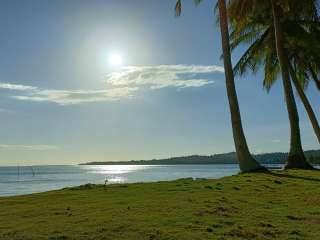
Unisan Sands is a white sand beach resort that boasts a kilometer of uninhabited shoreline and a picturesque infinity pool. ...
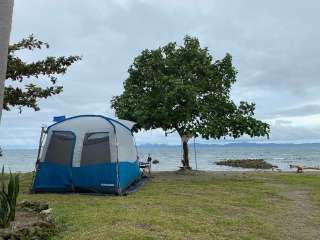
Isla de Cavana is a seaside camping site located at Sitio Ibaba Brgy. Inaclagan Gumaca, Quezon.
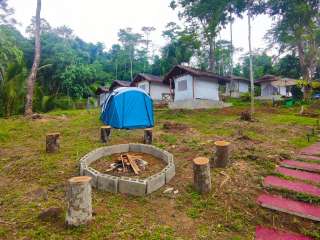
Kamp Nirvana is an idyllic place alongside a mystifying river surrounded by lush wilderness. It is in a middle of ...
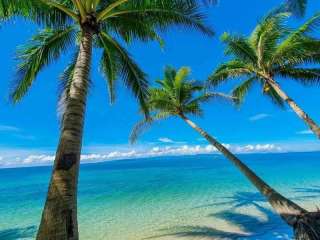
Amando's Campsite is a beach camping site located in Brgy. Gatasan Catanauan Quezon, Catanauan, Philippines Rates: Canopy daytour: ₱500 Canopy ...
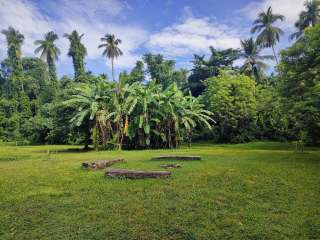
Camp Spotted-Wood is a quiet, off-the-beaten-path nook at Villa Escudero Plantations and Resort. Located along the Bulakin river, the campground provides another experiential ...
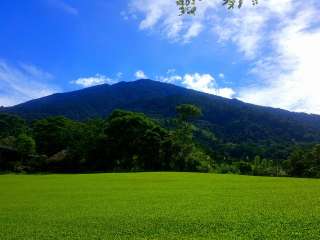
Bangkong Kahoy translates to Wooden Bench, hence the name “bangko” which was derived from live tree trunks and branches. About ...

Rest. Relax. Recharge. Unplug to the world and enjoy the beauty & calmness of nature at Kamp Lema! Kamp Lema ...
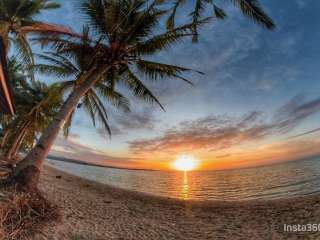
Perfect for minimalist traveler wishing to explore the island. Best place for Family Outing, Couple's Retreat and Team Building.
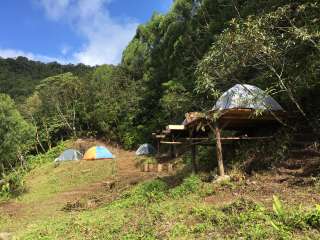
Our community camping ground is situated at the heart of the Sierra Madre. Marquez Bulalohan Camping Grounds is a roadside ...

Kuta Bungliw is an overlooking cliff house, a base for outdoor activities, hiking,swimming, bird watching. A place where one could ...